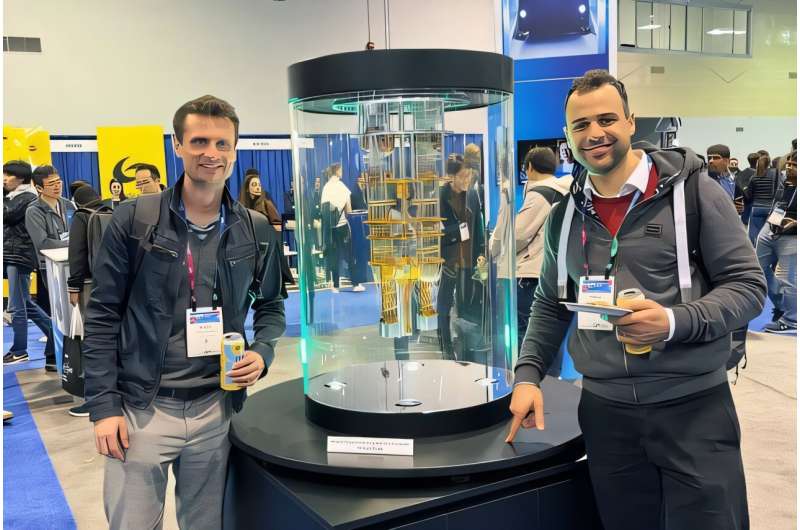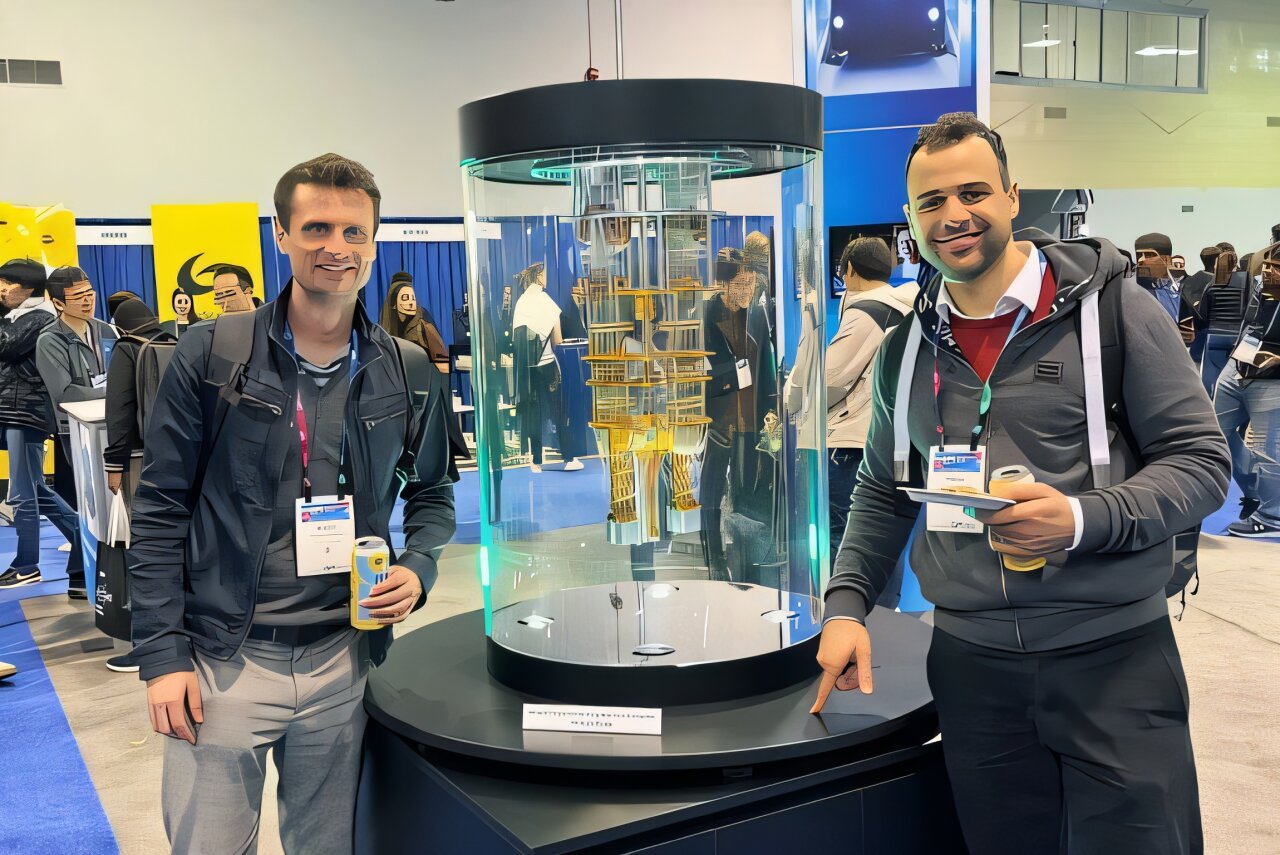
Andrej Pustogow (left) and Fabian Garmroudi (right) next to an exhibit of a quantum computer at the APS Global Physics Summit in Anaheim, California, USA. While both are investigating new quantum materials that could be used in quantum computers, in turn quantum computing would be extremely helpful for materials science. Credit: Vienna University of Technology
New applications often require new materials. Quite often, materials are needed that do not occur naturally or have very specific properties. In order to find suitable materials for pioneering technologies, it is often not enough to follow the trial-and-error principle and systematically work through the periodic table. This applies particularly to the search for suitable thermoelectric materials that convert heat into electricity and are therefore of interest for a wide range of applications.
An international research team led by Andrej Pustogow from the Functional and Magnetic Materials research division of TU Wien has now succeeded in predicting new materials for generating “green energy” using an automated computer protocol.
Following that, the team synthesized the materials in the laboratory and tested them for application. The research team published its results in the journal Science Advances.
Knowledge is limited—computing power too
From school to university studies (in natural sciences or engineering), much of what is taught is state-of-the-art technology. However, this knowledge is limited, and textbooks only reflect the state of knowledge at the time of publication. This can lead to a long search for materials with specific properties in the wrong place.
“In the field of thermoelectricity, for example, Abram Ioffe suggested in the 1930s that semiconducting materials should be researched for this application, as metals were not suitable,” explains Fabian Garmroudi, first author of the study.
Pustogow adds, “After almost 100 years of intensive research on semiconductors, which still has not led to widespread applications, a new idea was needed that goes beyond textbook knowledge.”
In recent years (nickel-gold alloys, traffic jam of electrons), the team has already demonstrated that certain metals can be a promising alternative for thermoelectric applications.
Even though the newly discovered materials were not found by pure luck, the researchers have now launched a large-scale search through the periodic table to identify a larger number of candidates for widespread/broad applications.
Despite the incredible computing power of supercomputers such as the Austrian Scientific Cluster (ASC), the more than 100 elements are too many for a blind search through the periodic table, as the computing time for combinations of just a few dozen types of atoms would exceed the age of the universe.
“Our recipe here was,” says Pustogow, “to determine the relevant material properties using automated calculations in a well-defined part of the periodic table.”
Starting point for the search for new materials determined
The researchers selected the transition metals iron, cobalt, and nickel as their starting point. Their compounds with all other elements were calculated using a supercomputer.
“For nickel alone, these include compounds such as nickel-lithium (Ni-Li), nickel-beryllium (Ni-Be), nickel-boron (Ni-B), nickel-carbon (Ni-C), and so on—all the way to nickel-lanthanum (Ni-La), which ultimately led us to the particularly promising intermetallic compounds nickel-tin (Ni3Sn) and nickel-germanium (Ni3Ge),” explains Pustogow.
The material with the best predicted properties was the compound of nickel and tin. “This also occurs as a natural mineral, nisnite, in Earth’s crust and is formed under high pressure and high temperatures. However, the material is difficult to produce under normal conditions in the laboratory, which is why we focused our experiments on Ni3Ge,” adds Fabian Garmroudi.
Samples of nickel and germanium ultimately demonstrated excellent thermoelectric properties in the laboratory, as predicted by the computer protocol.
Designing materials for a specific purpose
In materials science, the following procedure is often used: various elements are melted together in the laboratory and samples are produced, the quality of which is assessed before measurements are finally taken on the material. Thanks to their computer simulations, the team was able to achieve the same result with minimal material and time expenditure.
“The fact that we have found technologically relevant properties in a simple material consisting of two types of atoms is very promising. This gives us hope that our method—extended to more complex systems consisting of, for example, three types of atoms—will identify many more interesting materials,” says Fabian Garmroudi.
New materials are not only being designed on computers by university researchers; tech companies such as Google and Microsoft are also pursuing this approach. They are making use of the vast amounts of theoretical and experimental data that have been collected in recent years and compiled in databases.
Artificial intelligence can ultimately be used to identify connections that are not obvious to humans. This makes it possible to predict new materials with desired properties. However, even today, the best results are still achieved with human intuition and creativity—supported by the computing power of computers.
More information:
Fabian Garmroudi et al, Energy filtering–induced ultrahigh thermoelectric power factors in Ni 3 Ge, Science Advances (2025). DOI: 10.1126/sciadv.adv7113
Provided by
Vienna University of Technology
Citation:
From the computer straight to applications: Automated protocol predicts new thermoelectric materials (2025, August 6)
retrieved 6 August 2025
from https://techxplore.com/news/2025-08-straight-applications-automated-protocol-thermoelectric.html
This document is subject to copyright. Apart from any fair dealing for the purpose of private study or research, no
part may be reproduced without the written permission. The content is provided for information purposes only.

